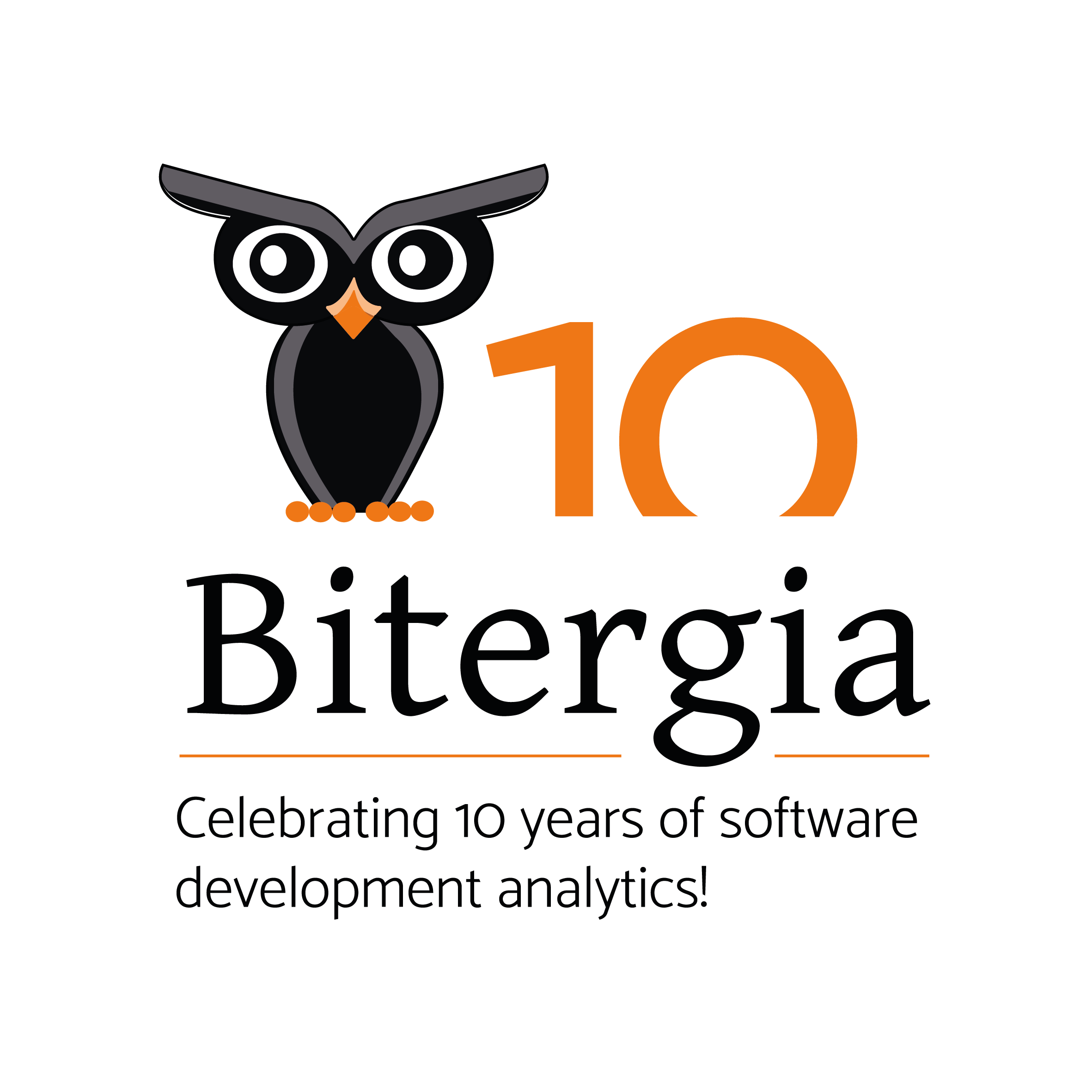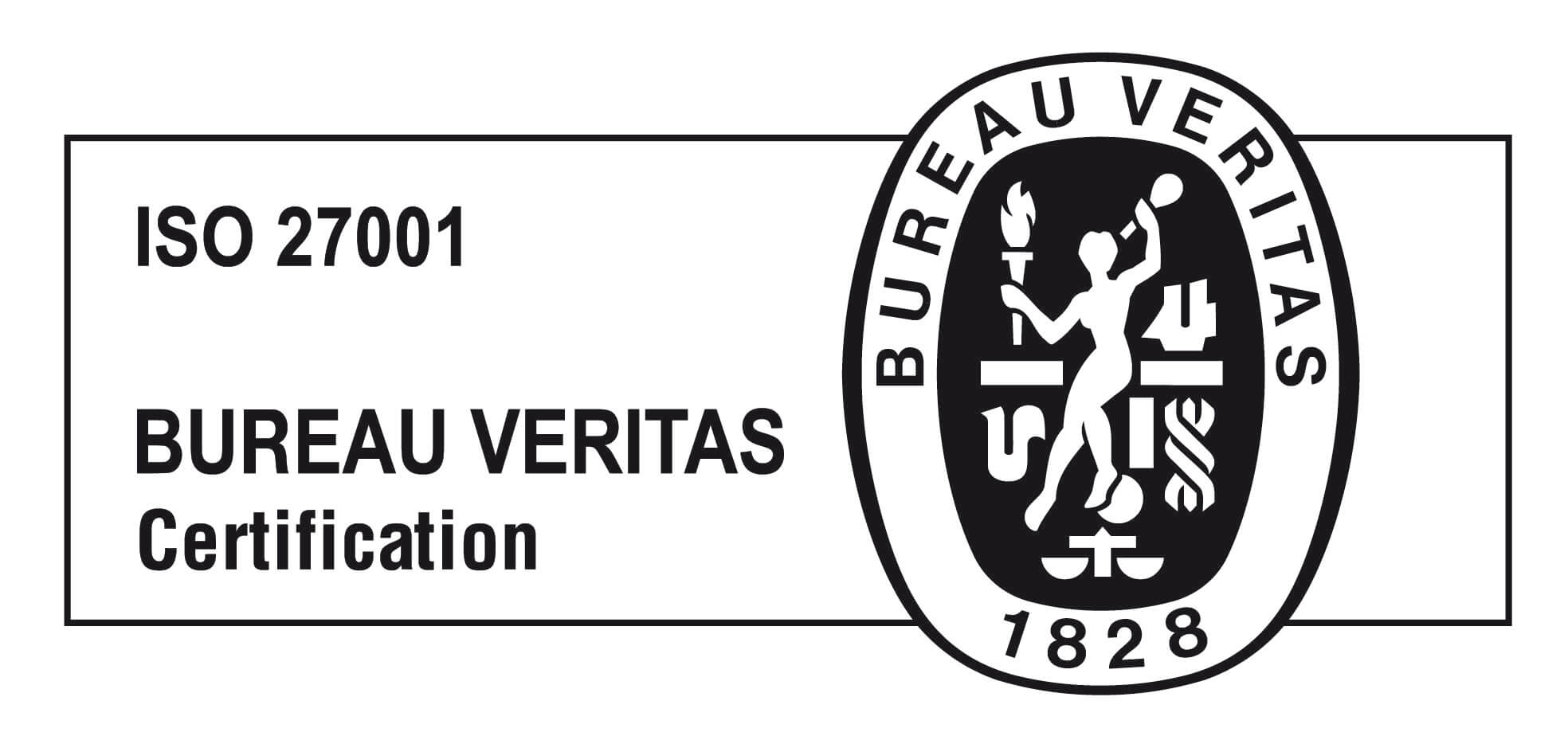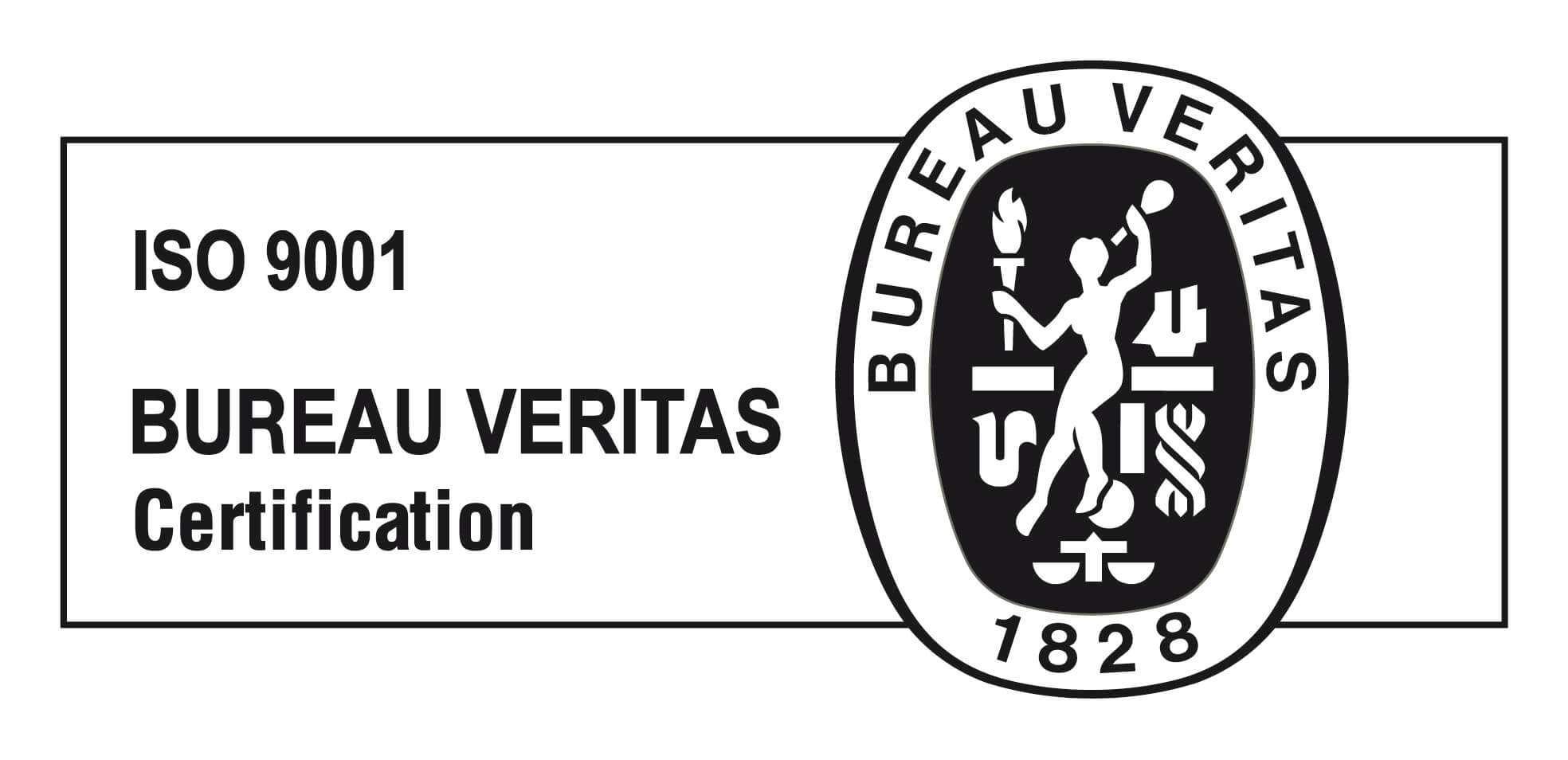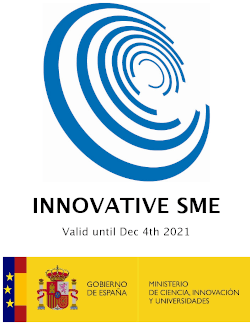Mentoring is one of those activities key in any open source communities as well as in any other environment such as internally at companies. The new edition of the OpenStack gender report [to be published], produced by Intel and Bitergia, has focused specifically on those programs that help newcomers and filling the existing knowledge gap.
Outreachy or Google Summer of Code are great examples of this. The Outreachy program “provides three-month internships for people from groups traditionally underrepresented in tech” as stated in its website. While the Google Summer of Code “is a global program focused on bringing more intern developers into open source software development”. Both programs have different initial goals but there is a common necessity: mentors and interns.
How successful are these programs when attracting and retaining these new members? Are these mentor-based programs a good starting point for those interested in the technology and to help newcomers? If so, are there any lessons learned that the community itself can learn from? This post will focus on the Outreachy program as most of the information is based on this dataset. The OpenStack Foundation only had the opportunity to be admitted at GSoC during 2014 with 6 interns.
As starting point for the Outreachy analysis, the following picture shows the geographical distribution of all of the interns that have participated at some point in the program till the end of 2017.
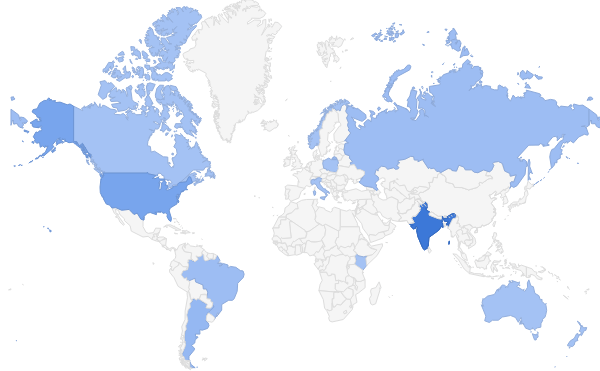
The aggregated numbers indicates that there have been accepted 38 inter in total from 13 different countries in approximately 17 different projects and having on board 31 mentors. The number of projects is approximate as since 2013 several repositories and projects have had a renaming or they may not even exist.
This mentorship analysis has focused on three main areas of activity: commits, changesets, and emails. The most prolific edition was the very first one in 2013 where the total number of aggregated contributions is more than 300 commits or changests and more than 1 thousand emails since then.
And now let us go to the point: how is the retention rate of the community if compared to the Outreachy program? The following picture provides an overview of the developers that are still active nowadays from each of the periods of time when an Outreachy edition took place. Thus, in the first edition of 2013, the percentage of active developers that committed their first contribution by then and that are still contributing nowadays (at least in the last six months) is around 5% of the total population. These values are under 10% until 2016 where the numbers increase. Please notice that the closer the time to nowadays the more chances a developer is still contributing to the community. We should see this as the typical turnover in companies, but taking place in open source communities.
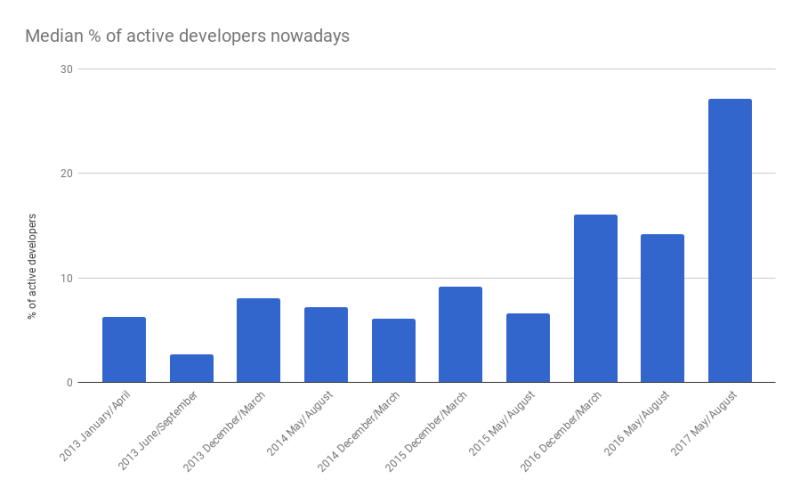
The following figure shows the same numbers for the Outreachy program. As it is not fair to compare interns to developers being paid by the community, it is still interesting to see the usual retention ratio for this program for the last 10 editions. It is remarkable that when an intern decides to keep contributing, those remain for a long time. And values are close to 20% in three of them and 66% in the case of the first edition. Indeed, when aggregating all of the numbers for the Outreachy program, the retention rate is 13% that is over the usual retention rate in the community that typically remains under 10% (usual numbers in others as well).
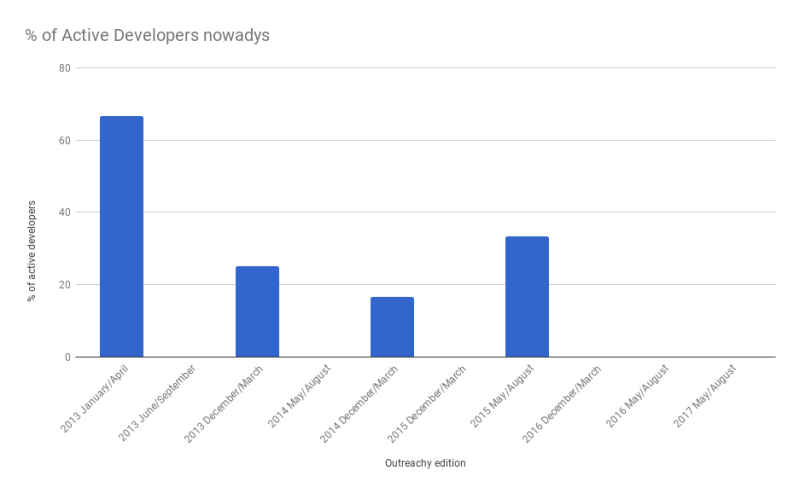
Thus, are programs such as Outreachy more prone to retain developers than others? Well, this is something we can not confirm, but what it is true is that they are at least at the same level of the rest of the community, perhaps with a higher performance, and focusing on people that are not paid by a company, (although they are paid by the Outreachy grant) and this definitively helps to build a more diverse community within OpenStack.
In addition to these two programs, the OpenStack Foundation works on three extra programs that are the Upstream Institute, the Speed Mentoring Initiative and the Long Term Mentoring. Unfortunately, there are not public datasets to track the activity of the participants. However those can be part of another post by themselves :).
If you are interested in learning more about the mentor programs in the OpenStack Foundation, do not miss the great panel led by Nicole Huesman at the OpenStack Summit titled as “OpenStack Mentoring: Inspiring the Next Generation“.
In addition to this, Bitergia will be at OSCON this year in July with a booth and I would recommend you to visit us for more insights on this topic and others related to the analysis of open and inner source communities. Indeed we are preparing a Bitergia Analytics Workshop where we will detail how you can create your own gender-diversity analysis and other studies. Stay tuned!
Last but not least, I would like to personally thanks Nicole Huesman for her passion and time when building this analysis, to Allison Price and Victoria Martínez de la Cruz that helped very much with some portions of the dataset, and the GrimoireLab community and Bitergia for making possible this type of analysis.





